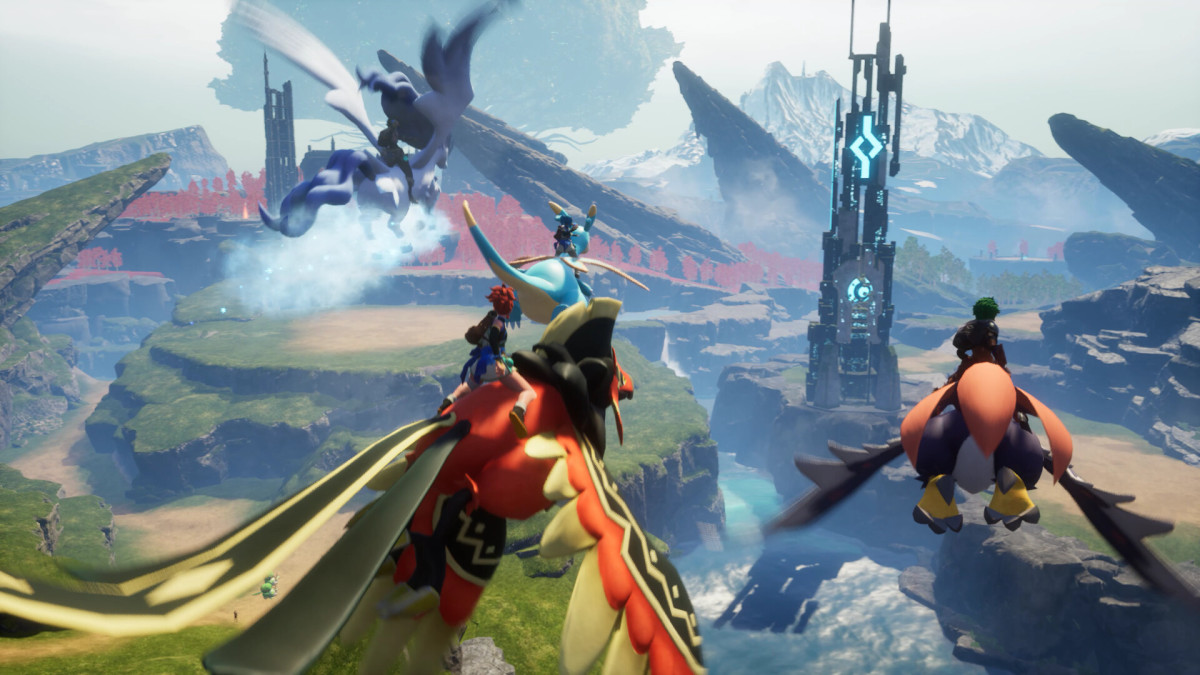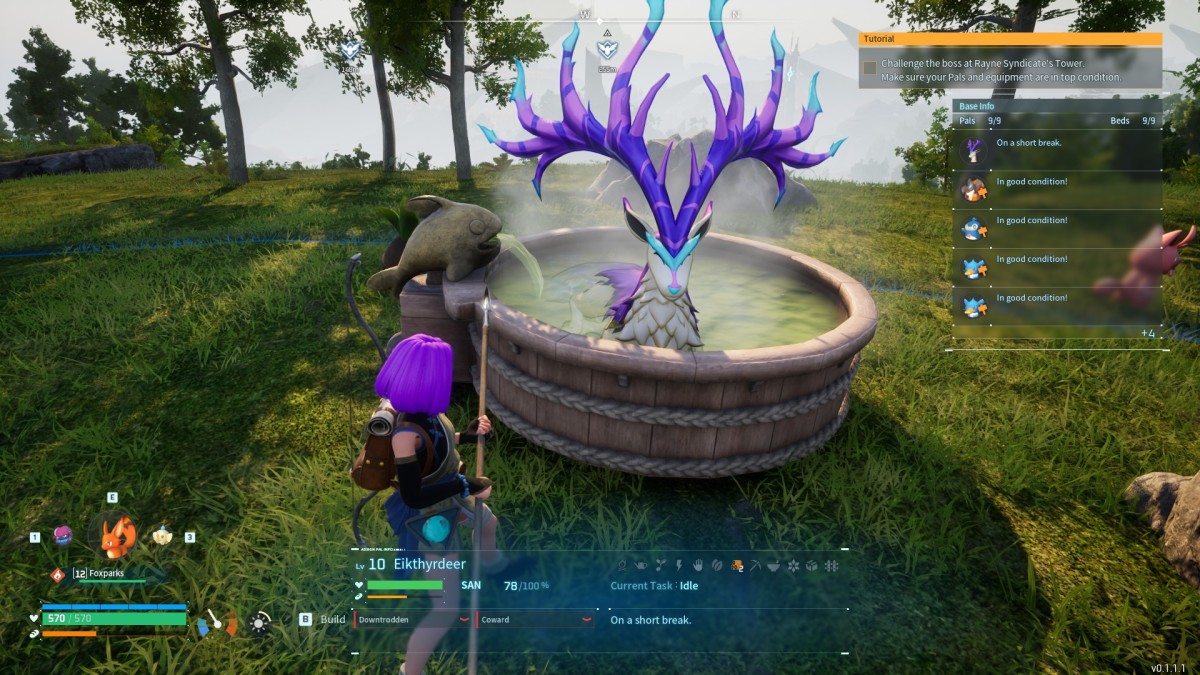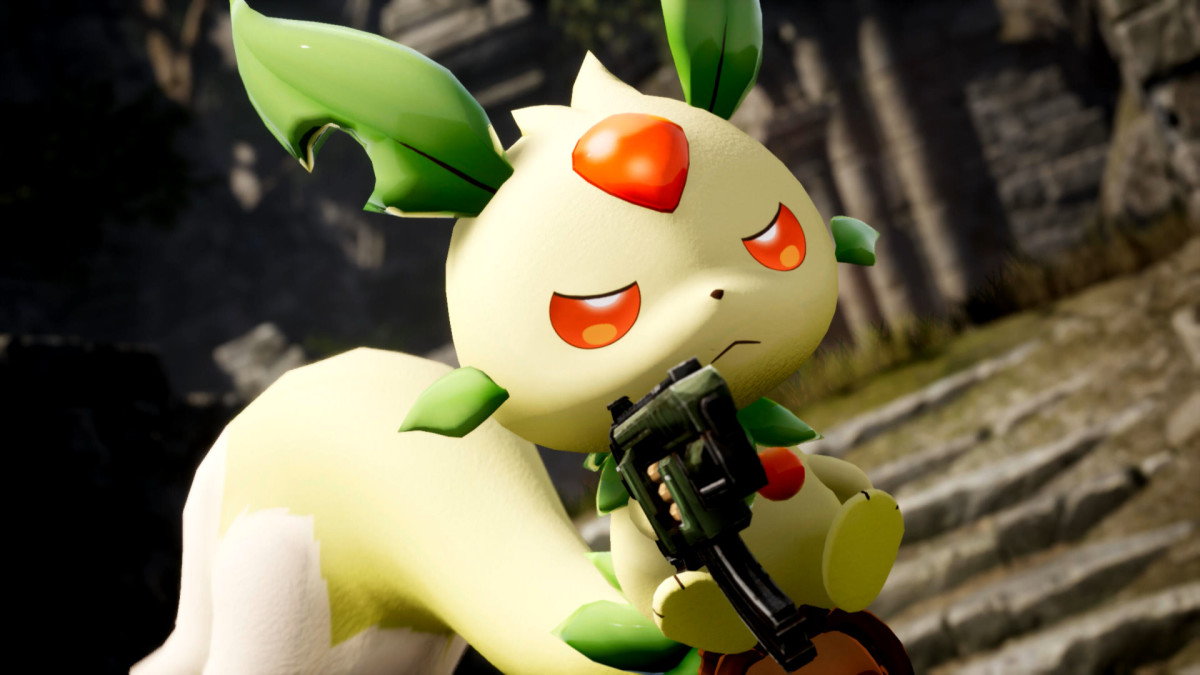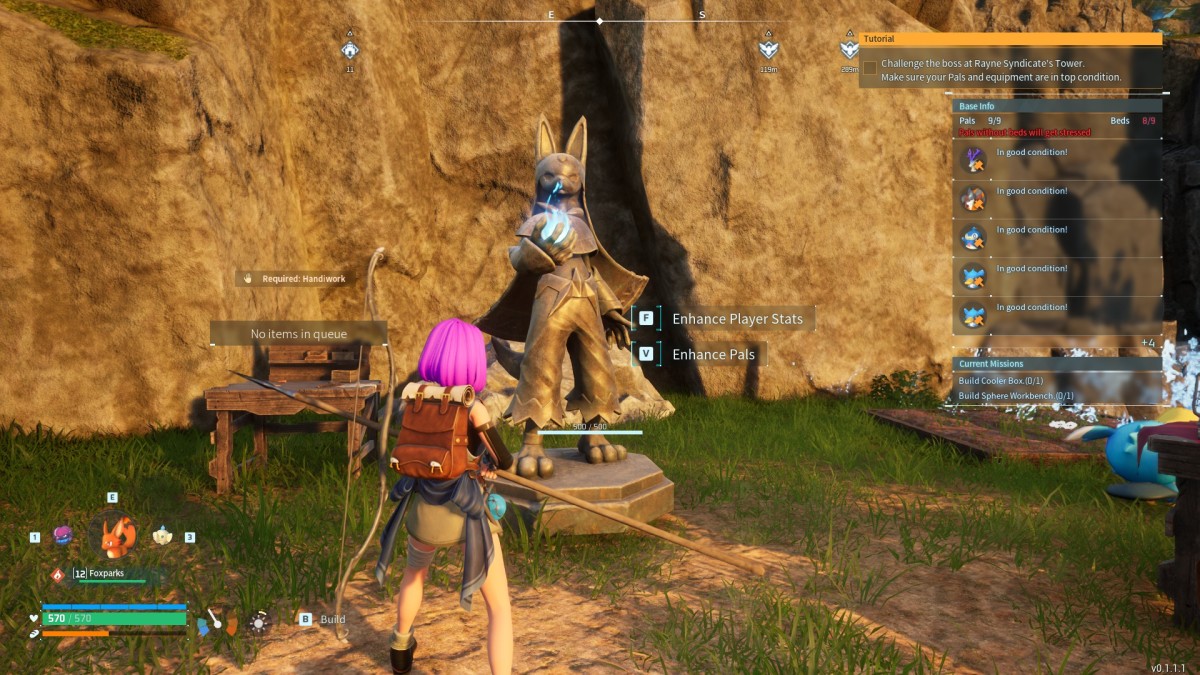Palworld review: Procuring projectiles with primitive Pals, passionately
Have you ever looked at a Vulpix and wanted to use it as a Flamethrower? Have you ever seen an Eevee and wanted to shear its fur and turn it into a jacket? Have you ever wanted to hand Pikachu a sub-machine gun, just to see what happens?
If your answer to any of those questions was yes, 1) see a therapist, and 2) Palworld lets you do all of those things.
In the build-up to launch, this game was often touted as “Pokémon with guns”, but that’s a little misleading. It’s more like Rust with legally distinct Pokemon. Gameplay-wise, it’s a survival crafting game first and foremost, with the cute creatures enhancing that side of the game, rather than focusing on collecting and battling them.

As far as the basic survival elements go, it’s nothing you haven’t seen before, but I think it does a good job of balancing how nagging your various status bars can be. You have to regularly deal with your hunger and body temperature, but they don’t overbear the experience, which is a mistake a lot of survival games make.
It has a good sense of progression in its tech tree, which is stuffed full of exciting things to unlock. There are five unlocks per level for 50 levels, and it feels perfectly plotted so that each new level gives you that next step forward you’re looking for in growing your base or raising your Pals.
This helps it succeed on the most fundamental level, which is that even if the Pals weren’t part of the equation, this would still be a good (if slightly generic) survival crafting game. However, add the Pals into the mix and suddenly it becomes something special.

The Pals aren’t just a side attraction, they’re ingrained into every system. The exploration, the base-building, and the survival elements all force you to interact with them in a way that transforms the whole game.
Exploring the world is so much fun when you’re discovering new creatures around every corner. It puts me in mind of Pokémon Legends: Arceus, where I could run around the world for hours just having encounters with everything in sight. Also like that game, the focus is on catching and raising them more than battling. You get XP bonuses for catching multiple Pals of the same species, and you get the resource drops regardless of whether you KO or catch them, which all feeds into building your production empire.
When you take your Pals back to your base you can set a number of them loose in the area to help you produce everything you’ll ever need, and this number grows as your base levels up, letting you start simple but grow into an empire very quickly. It makes you carefully consider which Pals you’ll put to work, as they each have a small selection of tasks they can complete. Only grass-types can plant crops, only fire-types can fuel furnaces, and only Pals with hands can transport goods, for example.

Each Pal also has random traits that can either improve or hinder its performance. Some might be more suited to working at a base, while others should be kept in your party for battle – giving variation even within a single species (something Pokémon has never properly managed). It’s another way in which the game encourages you to catch as many Pals as you can, as it’s for a greater purpose than just completing your Paldex.
It’s not just a set-it-and-forget-it situation either, as Pals have their own stats like hunger and sanity to deal with. If you overwork them without giving them proper recreation they’ll refuse to work or end up injured, forcing you to craft medicine to heal them or take them off the field for a bit. It allows for the automation of resource gathering to avoid a grind, but you have to put real time and effort into making it all run smoothly.

Pals’ functionality goes even further than that though, as a vast majority also have unique craftable items that let you unlock special field abilities. When I said you could use a Vulpix as a flamethrower, I wasn’t kidding. You can craft a special harness for this game’s version of a fire-type fox, Foxparks, that lets it hop into your arms and shoot a powerful stream of flames at whatever’s in front of you.
While there isn’t a huge emphasis on battling, the game does feature several major boss encounters that you can find out in the world. Some of these are mini-bosses at the end of repeatable dungeons, while others are MMO-style raids designed to be played with up to four players at once. There isn’t much in the way of story connecting these elements yet, but the fights are a solid challenge that force you to master what combat mechanics there are – which is to say, have your adorable chipmunk friend jump your head and gun it down with an SMG.

There is one aspect that the game has been criticized for since it was first revealed, and that’s the fact that several Pal designs are awfully reminiscent of existing Pokémon designs. Palworld’s more cartoony art style helps negate this, but it’s hard to ignore the similarities between Robinquill and Decidueye, for example. There’s still plenty of originality in Palworld though. With 111 Pals at this early access launch, there are loads of brilliant designs that feel completely original.
By focusing on survival crafting rather than traditional Pokémon-style gameplay, Palworld has made something unique out of two genres that have been stale for a long time. It’s still missing some big features like PvP, but given that it’s only at the beginning of its time in early access, it will only get bigger and better.
Score 8/10
Version tested: PC (Steam)
- Visuals: 9/10
- Audio: 7/10
- Gameplay: 8/10
- Performance: 9/10
